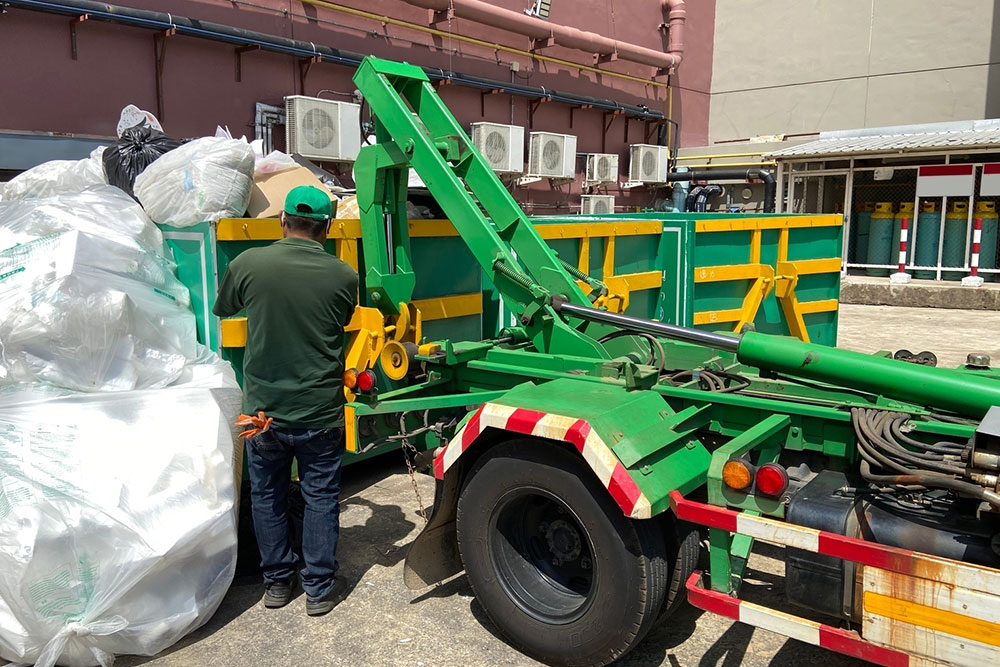6 common junk removal mistakes and how to avoid them

Junk removal is one of those tasks that nobody enjoys, but it is essential and cannot be avoided under any circumstances. It includes decluttering homes, removing unwanted objects from one’s house, or renovating a given room or space. Getting rid of junk from one’s house or workplace is fairly straightforward, yet people tend to make certain typical mistakes that undermine the process. Using common creativity, people can avoid these mistakes.
Not knowing what to get rid of
Like any major home renovation or repair job, planning is essential before starting the junk removal process in one’s house or workplace. The right place to start is to list what one needs to remove from one’s property. A major mistake people make is keeping unused objects far longer than they need or want. After a while, those objects lose their functionality anyway, and as they pile up in store rooms, they make homes disorganized.
A list of everything one wants to get rid of should involve every object that makes one’s house more stuffed. One needs to be realistic, ruthless, and not sentimental while making the list of things to bin from their house.
Overestimating what one can handle
Junk removal is not a task many people look forward to, and some tend to take on too many tasks. This can be a problem, especially when the items to be removed are large and heavy, and the necessary tools or equipment may not be available.
The right way to go about junk removal is to assess the size and weight of the items one needs to remove. If the items are too large or heavy, like appliances and hazardous materials, then hiring contractors for the task is a wise decision. In fact, consulting a professional junk removal company for the entire process is highly advisable for people. But if this is not possible, then taking on smaller tasks that can be managed comfortably is a better option.
Not sorting objects correctly
Once the list is made and the various junk removal tasks delegated, it is imperative for people to avoid improper sorting of their items. For example, people may put all expendable objects into the same pile, making it doubly hard for them to separate garbage from potential recyclables. Also, when the objects are not sorted correctly, the risk of contamination runs pretty high.
Ideally, junk removal must involve separate piles for hazardous objects, donation-worthy objects, garbage, and recyclables. Making such lists helps people organize their houses much more quickly. While there is no set list to classify each household object into the four categories mentioned earlier, one must go with one’s gut feel and common sense to get the classification as close to perfect as possible.
Choosing the cheapest option
If people finally decide to hire a junk removal company to do the task for them, then they must totally avoid cutting corners and look for the most cost-effective contractor out there. Now, expensive does not automatically translate to efficiency, but the cheaper companies provide services of quality just like the prices they charge: low. The cheapest junk removal companies often consist of either unskilled workers or charge hidden fees in the final bill. This lack of transparency sours the entire process for people.
To avoid these problems, one must check out the online ratings of a junk removal company before they put their money on it. People can even consult their neighbors, friends, work colleagues, and family members to know about good junk removal companies they may have opted for in the past. Besides, searching for junk removal companies on the Internet and reading reviews from previous customers can help one choose the most suitable service for one’s needs.
Leaving rubbish on the road
Some junk removal mistakes leave one’s house in a worse state, and then some mistakes make life difficult for others. A particularly irresponsible thing to do while cleaning junk from one’s house is to leave rubbish on the road for others to pick up and clean. Often, people think that poor and homeless people on the street will pick up one’s junk objects and use them. This is incorrect as most people, homeless or otherwise, do not tend to touch things found by the roadside.
A slight variation to this error in judgment is illegal dumping. People who do not know where they can dump their junk may offload it illegally. It is easy for people to get tempted to do this, especially as the risk of getting caught may not always be too high. Dumping one’s rubbish illegally only pollutes one’s immediate environment and makes living unsustainable for everyone around them.
Burning garbage
If illegal dumping is bad for the environment, then burning garbage is a thousand times worse than that. Burning garbage creates toxic fumes and smoke that can cause lung and heart problems to people in the immediate vicinity of the scene. Additionally, doing so may also result in being subjected to arrest and jail time based on complaints from neighbors. For one’s own sake and the environment, people must avoid burning their garbage when they commence their junk removal process.







